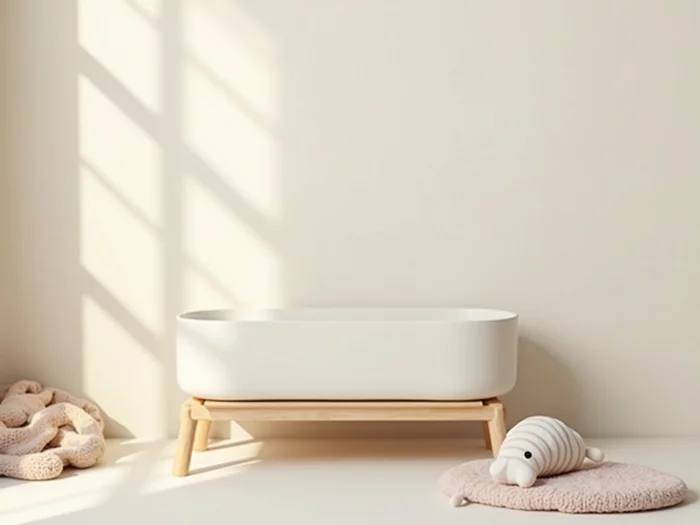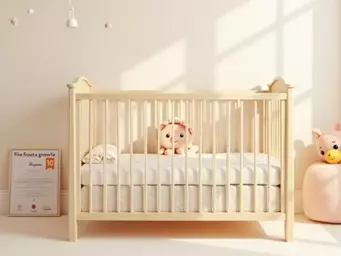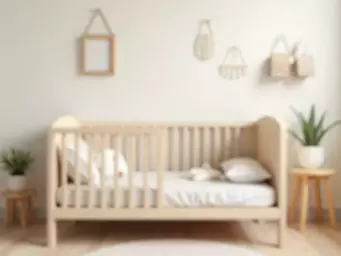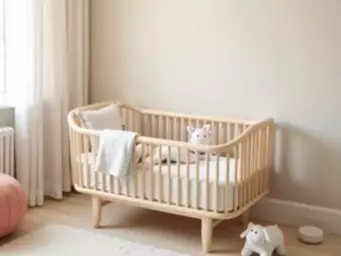Key Regulations and Certifications
These ensure bassinets meet UK and international safety benchmarks for cribs and baby products.
Get Clara Jennings' expert cot bed reviews and safety tips delivered straight to your inbox. Your baby deserves the best!
Posted on: 2025-09-26
By: Clara Jennings
Choosing the right bassinet is a significant step in ensuring your baby's safety. Did you know that understanding safety standards can make all the difference? Let's delve into what you need to know!
Understanding bassinet safety standards and choosing the right type are crucial for your baby's safe sleep. Below is a comparison of key safety regulations and common bassinet types.
These ensure bassinets meet UK and international safety benchmarks for cribs and baby products.
When it comes to our little ones, safety is always the top priority! Understanding bassinet safety standards in the UK is essential for new parents. The two key safety regulations you should be aware of are BS EN 716 and the JPMA standards. These guidelines ensure that bassinets are designed and manufactured with safety features that protect your baby from potential hazards.
BS EN 716 outlines the safety requirements for folding and non-folding cribs, providing a benchmark for manufacturers. On the other hand, the JPMA (Juvenile Products Manufacturers Association) certification indicates that a product has been rigorously tested to meet safety standards. By choosing products that comply with these regulations, you can feel more confident in the safety of your baby’s sleeping environment.
It’s crucial to know the specific requirements that keep babies safe while they sleep. Here are some key aspects of the UK safety regulations:
By understanding these key regulations, you can make informed choices that prioritize your baby’s safety and comfort. It’s always a good idea to check for these standards while shopping for a bassinet.
When it comes to ensuring your baby's safety, reliable safety certifications are your best friends! Look for certifications like BS EN 716 and the JPMA seal on products. These labels mean that the product has been tested for safety and meets the necessary standards.
Also, consider checking for additional certifications such as ASTM (American Society for Testing and Materials) or CPSC (Consumer Product Safety Commission) standards if you're looking at imported products. These certifications can further assure you of the product's safety and reliability.
The role of the Health and Safety Executive (HSE) cannot be overstated when it comes to ensuring product safety in the UK. The HSE oversees compliance with safety regulations and monitors the performance of baby products, including bassinets. This means that if any safety concerns arise, the HSE can issue warnings, recalls, or safety alerts to protect consumers.
As parents, staying informed about such regulations helps you choose safe options for your little one. Regularly checking for any updates from the HSE and being aware of recent product recalls can make a significant difference in keeping your baby safe.
When it comes to choosing the right sleeping arrangement for your baby, understanding the different types of bassinets can be a game-changer! Each type has unique features that cater to varied parenting styles and space needs.
Let's break down the differences between Moses baskets and bedside sleepers, two popular options among new parents.
Choosing between these two options depends on your lifestyle and how you plan to care for your baby during the night. Which one do you think would work best for your family's needs?
Have you considered a multifunctional bassinet? These innovative designs combine various features, making them incredibly practical for modern parents. Some models include changing stations, storage compartments, or even built-in rockers!
The versatility of these bassinets not only saves space but also reduces the number of items needed in your nursery. Plus, they can transition easily as your baby grows, offering lasting value.
When deciding between a bassinet and a crib, it's essential to evaluate their differences in terms of safety and usability. Here are some points to consider:
Ultimately, you’ll want to choose the option that aligns with your lifestyle and your baby’s needs. What features matter the most to you? Let me know your thoughts!
Here's a brief recap of the key points discussed so far:
When it comes to choosing a bassinet for your precious little one, staying informed about safety concerns is vital. Recent recalls or safety alerts can be overwhelming, but I'm here to help you navigate through it! Understanding how to respond to these issues can truly make a difference in ensuring your baby's safety.
In the UK, it’s essential to stay updated on any recent recalls affecting bassinets. For instance, if a model is recalled due to safety concerns, manufacturers typically provide guidelines on what to do next. Here’s a quick summary of steps to take:
By following these steps, you can ensure a safe sleeping environment for your baby. Remember, prompt action is key!
Many pediatricians emphasize the importance of safety in infant sleep environments. Dr. Sarah Thompson, a well-respected pediatrician, recommends that parents always check for safety certifications on their chosen bassinet. She says, “A safe sleep space significantly reduces the risk of Sudden Infant Death Syndrome (SIDS).” This is why I always stress the importance of selecting products with reputable safety standards.
In addition, pediatricians often suggest that parents regularly assess their baby’s sleep setup to ensure it remains safe and comfortable. For further guidance on creating a safe sleep environment, you can refer to resources from reputable organizations like the American Academy of Pediatrics (AAP) and the Massachusetts Department of Public Health. It’s all about being proactive!
As a passionate advocate for safe nursery choices, I've read numerous reviews from parents about popular bassinet models. Many highlight features like ease of use and safety ratings. Here are some common themes observed:
By paying attention to these reviews, you can gain valuable insights that help guide your choice. It’s always enlightening to hear from other parents who have tried these products firsthand!
In the UK, the primary safety standard to look for is BS EN 716, which covers safety requirements for folding and non-folding cribs. Additionally, JPMA (Juvenile Products Manufacturers Association) certification indicates rigorous testing against safety standards.
Key safety features include strong stability to prevent tipping, durable materials to withstand wear and tear, construction from non-toxic materials, and proper ventilation to reduce the risk of overheating.
The HSE monitors compliance with safety regulations for baby products in the UK. They can issue warnings, recalls, or safety alerts if products, including bassinets, fail to meet safety standards, helping to protect consumers.
Moses baskets are lightweight and portable but have a shorter lifespan (up to 3-4 months). Bedside sleepers attach to the adult bed, making nighttime feedings easier, and can be used for a longer period (up to 6 months or more).
If your bassinet is recalled, immediately stop using it. Check the official government or manufacturer's website for recall announcements and follow their instructions regarding returns, exchanges, or repairs. Prompt action is crucial for your baby's safety.
Here is a quick recap of the important points discussed in the article:



 Did you know that starting in 2025, the UK will implement new fire safety regulations for baby cot b
Did you know that starting in 2025, the UK will implement new fire safety regulations for baby cot b
 Have you ever felt a mix of excitement and anxiety while choosing a cot bed for your baby? With so m
Have you ever felt a mix of excitement and anxiety while choosing a cot bed for your baby? With so m
 Choosing the right bassinet for your baby can be both exciting and overwhelming, especially when you
Choosing the right bassinet for your baby can be both exciting and overwhelming, especially when you